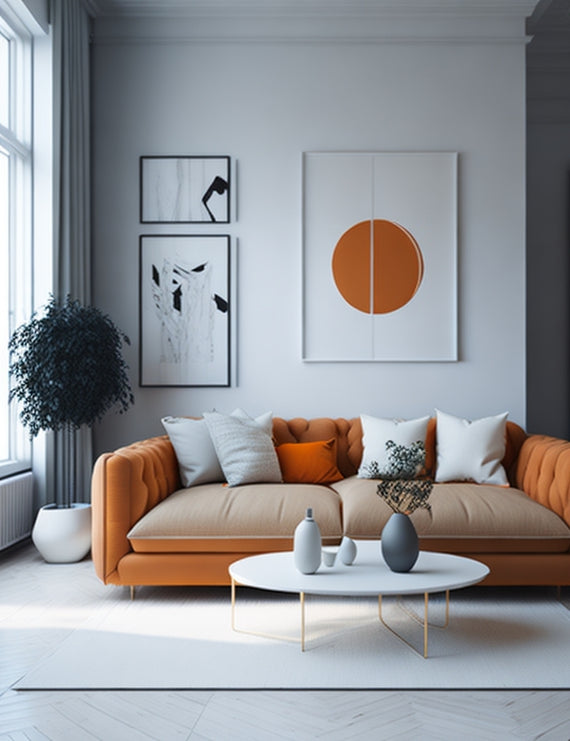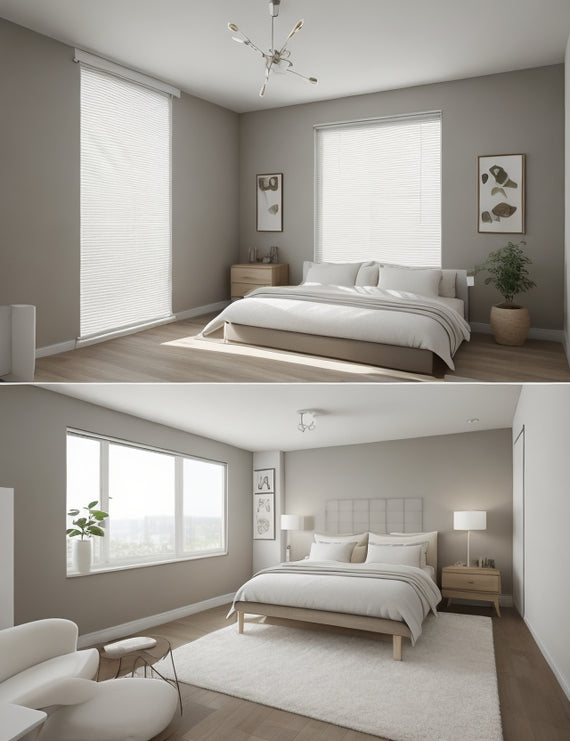Discover the Hidden Potential of ChatGPT AI: The Future of Furniture Design and Styling in Pakistan
Introduction
In today's rapidly evolving world, technology continues to revolutionize various industries, and the field of interior design is no exception. One of the most exciting advancements in this arena is the use of ChatGPT AI, which offers limitless possibilities for furniture design and styling. In this article, we will delve into the world of ChatGPT AI and explore how it is shaping the future of furniture design and styling in Pakistan.
What is ChatGPT AI?
Understanding the Basics of ChatGPT AI
ChatGPT AI is an artificial intelligence model developed by OpenAI. It is designed to generate human-like text responses and engage in interactive conversations. GPT stands for "Generative Pre-trained Transformer," meaning that the model is pre-trained on massive amounts of data to understand patterns, syntax, and context.
How ChatGPT AI Works in Interior Design and Furniture
ChatGPT AI has been trained on a range of topics, including interior design and furniture. This enables it to generate high-quality suggestions, recommendations, and even detailed designs based on given inputs. By incorporating natural language processing and machine learning algorithms, ChatGPT AI can understand and respond to user queries and provide personalized design solutions.
The Role of ChatGPT AI in Furniture Design
Streamlining the Design Process with ChatGPT AI
Traditionally, the furniture design process can be time-consuming and labor-intensive. However, with ChatGPT AI, designers can significantly streamline their workflows. The AI-powered model can quickly generate design options, saving both time and effort. By automating repetitive tasks, designers can focus on more creative aspects of their work.
Enhancing Creativity and Innovation in Furniture Design using ChatGPT AI
Creativity is at the heart of any design process, and ChatGPT AI enhances this by providing unique and innovative design suggestions. The AI model can generate designs that designers may not have thought of, introducing fresh perspectives and pushing boundaries. This fosters a culture of innovation in the furniture design industry.
Providing Customization and Personalization for Furniture
Every customer has unique preferences and requirements when it comes to furniture. ChatGPT AI enables designers to cater to these individual needs by offering customized solutions. By interacting with customers and understanding their specific requirements, the AI model can generate personalized furniture designs that align with their preferences.
ChatGPT AI in Furniture Styling and Home Decor
Transforming Interior Spaces with AI Suggestions
Choosing the right furniture and decor pieces is crucial in creating a cohesive and aesthetically pleasing interior space. ChatGPT AI can suggest furniture and decor pieces that complement each other, ensuring a harmonious and visually appealing environment. By considering various factors such as color schemes, materials, and styles, the AI model helps in creating a cohesive interior design.
Optimizing Furniture Placement and Arrangement with ChatGPT AI
The way furniture is arranged can significantly impact the functionality and visual appeal of a space. ChatGPT AI can assist in optimizing furniture placement, taking into account factors such as room dimensions, traffic flow, and focal points. By suggesting optimal arrangements, the AI model ensures that the furniture is utilized to its full potential.
Utilizing ChatGPT AI for Trend Forecasting in Furniture Design
Keeping up with the Latest Design Trends using AI
Design trends are ever-evolving, and it's essential for furniture designers to stay updated. ChatGPT AI can analyze vast amounts of data from various sources, including social media, design blogs, and industry publications, to identify emerging trends. By leveraging this information, designers can create furniture that resonates with current market demands.
Predicting Future Style Preferences with ChatGPT AI
Looking into the future, ChatGPT AI can use its predictive capabilities to anticipate style preferences. By analyzing historical data and considering cultural, social, and technological shifts, the AI model can provide valuable insights on the direction of furniture design. This enables designers to proactively cater to future consumer demands.
Overcoming Challenges and Limitations with ChatGPT AI
Addressing Accuracy and Quality Concerns in AI-generated Designs
While ChatGPT AI offers immense potential, there are concerns regarding the accuracy and quality of AI-generated designs. It's important to ensure that the AI model receives proper training and validation with real-world data. Human oversight and feedback are necessary to refine and improve the AI-generated designs, ensuring they meet the desired standards.
Combating Bias in AI-generated Furniture Recommendations
AI systems are susceptible to biases, which can manifest in discriminatory or exclusionary design recommendations. To tackle this issue, it is crucial to create diverse and inclusive training datasets and incorporate ethical considerations into the AI development process. By embracing diversity and inclusivity, ChatGPT AI can produce more equitable and representative furniture recommendations.
The Importance of Human Touch in Furniture Design and Styling
While ChatGPT AI plays a significant role in furniture design and styling, the human touch remains indispensable. Designers possess an innate understanding of aesthetic sensibilities, cultural nuances, and emotional connections with spaces. ChatGPT AI should be seen as a tool that complements the human creative process, rather than replacing it entirely.
Case Studies: Successful Implementations of ChatGPT AI in Furniture Design
Case Study 1: Furniture Stores
Furniture Stores integrated ChatGPT AI into their online platform to assist customers in selecting the perfect furniture pieces. By engaging in interactive conversations with customers, the AI model provided personalized recommendations, resulting in increased customer satisfaction and sales.
Case Study 2: Interior Design Firms
Interior Design Firms implemented ChatGPT AI to streamline their design process. The AI model generated multiple design options, allowing designers to explore different possibilities efficiently. This significantly reduced design time and enabled the firm to take on more projects.
Case Study 3: Furniture Designers
Furniture Designers utilized ChatGPT AI to forecast upcoming design trends. By analyzing a vast amount of data, designers was able to stay ahead of the curve and create furniture pieces that met the evolving demands of their target audience. This gave them a competitive edge in the market.
Ethical Considerations and Legal Implications of ChatGPT AI in Furniture Design and Styling
Privacy and Data Security Concerns
As AI systems interact with users, privacy and data security become critical concerns. It is essential to implement robust safeguards to protect user data and ensure its confidentiality. Furniture brands and design firms that incorporate ChatGPT AI should prioritize user privacy and comply with relevant data protection regulations.
Intellectual Property Rights and Plagiarism Issues
AI-generated designs raise questions about intellectual property rights and plagiarism. It is essential to establish clear guidelines and frameworks that protect the intellectual property of designers and artists. While AI can aid in the design process, credit and recognition should be given to the original creators.
Ensuring Transparency and Accountability in AI-generated Designs
Transparency and accountability play a vital role in fostering trust between consumers, designers, and AI systems. It is crucial to provide clear attribution of AI-generated designs and disclose when AI is involved in the creative process. Openly addressing the limitations and biases of AI systems will contribute to building a more transparent and responsible design community.
Conclusion
ChatGPT AI holds tremendous potential for the future of furniture design and styling in Pakistan. By streamlining processes, enhancing creativity, and providing personalized solutions, this AI model revolutionizes the way furniture is designed, styled, and experienced. It is essential for designers, furniture brands, and design firms to embrace the capabilities of ChatGPT AI while continuing to infuse their unique human touch, resulting in truly exceptional and personalized interior spaces. Explore the diverse range of minimalist furniture that perfectly suits your unique style at Shamo Jee.
References:












